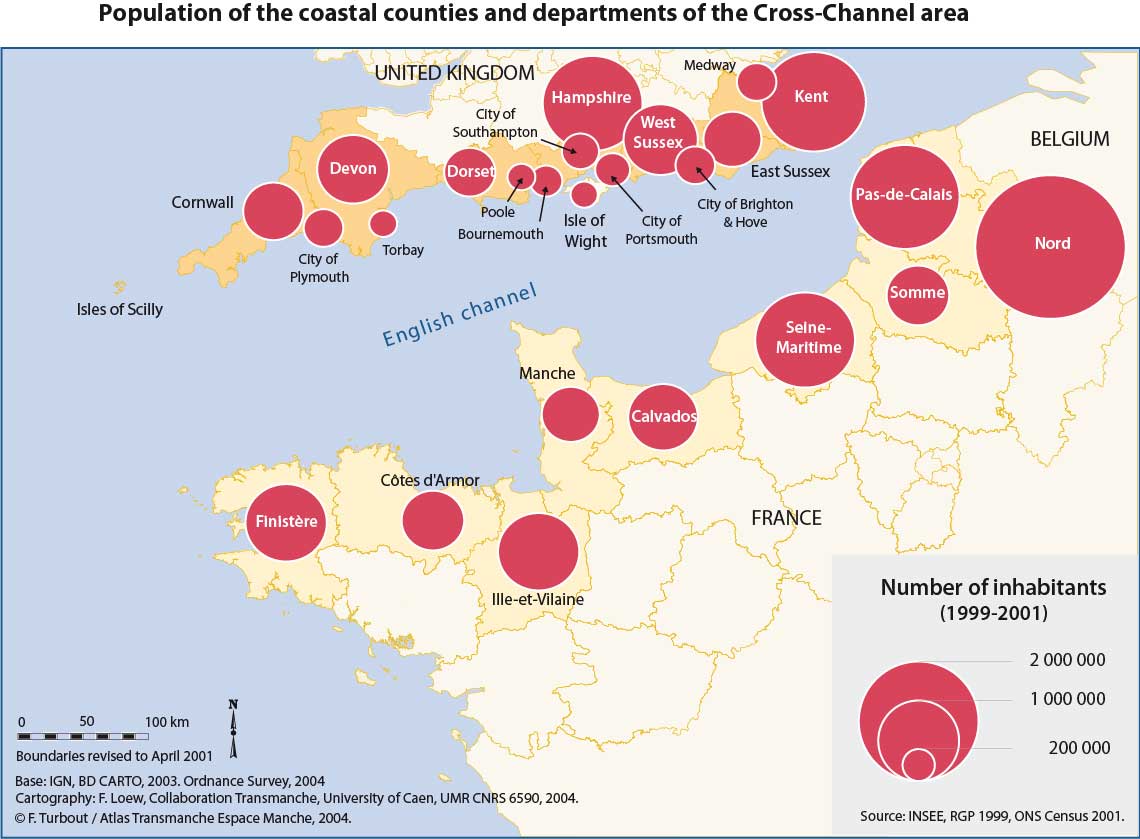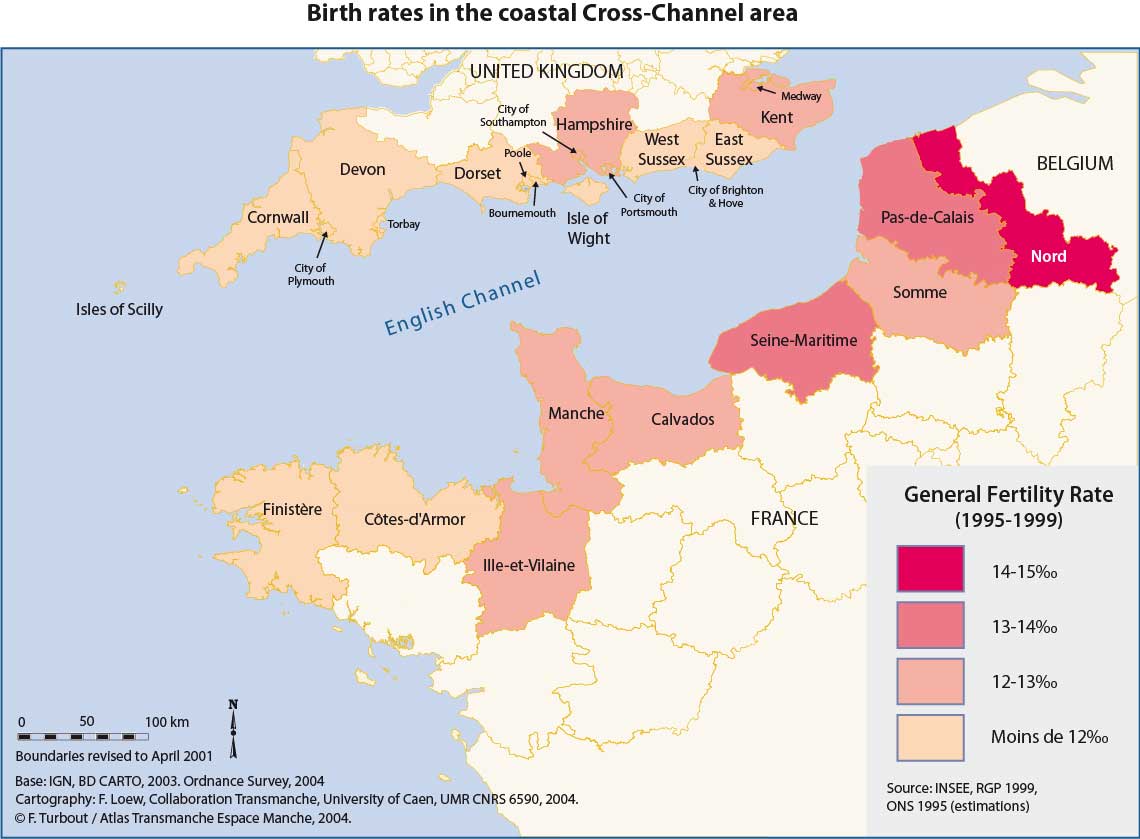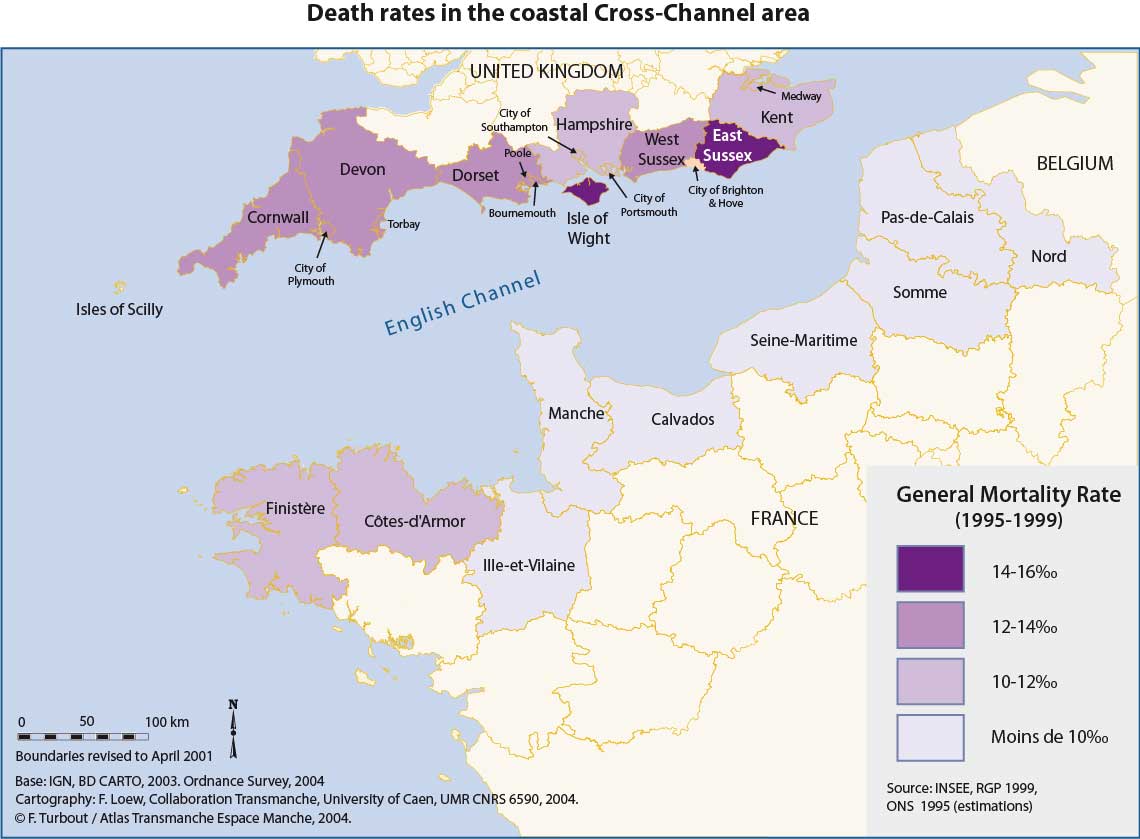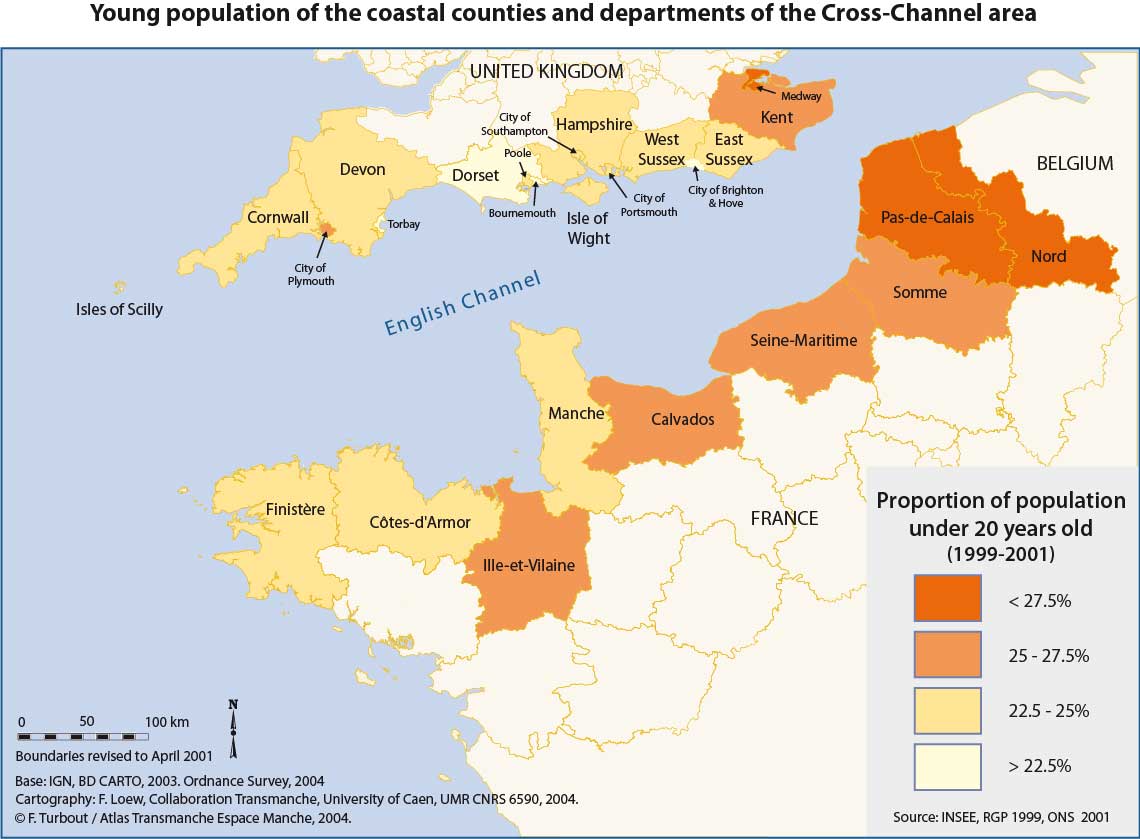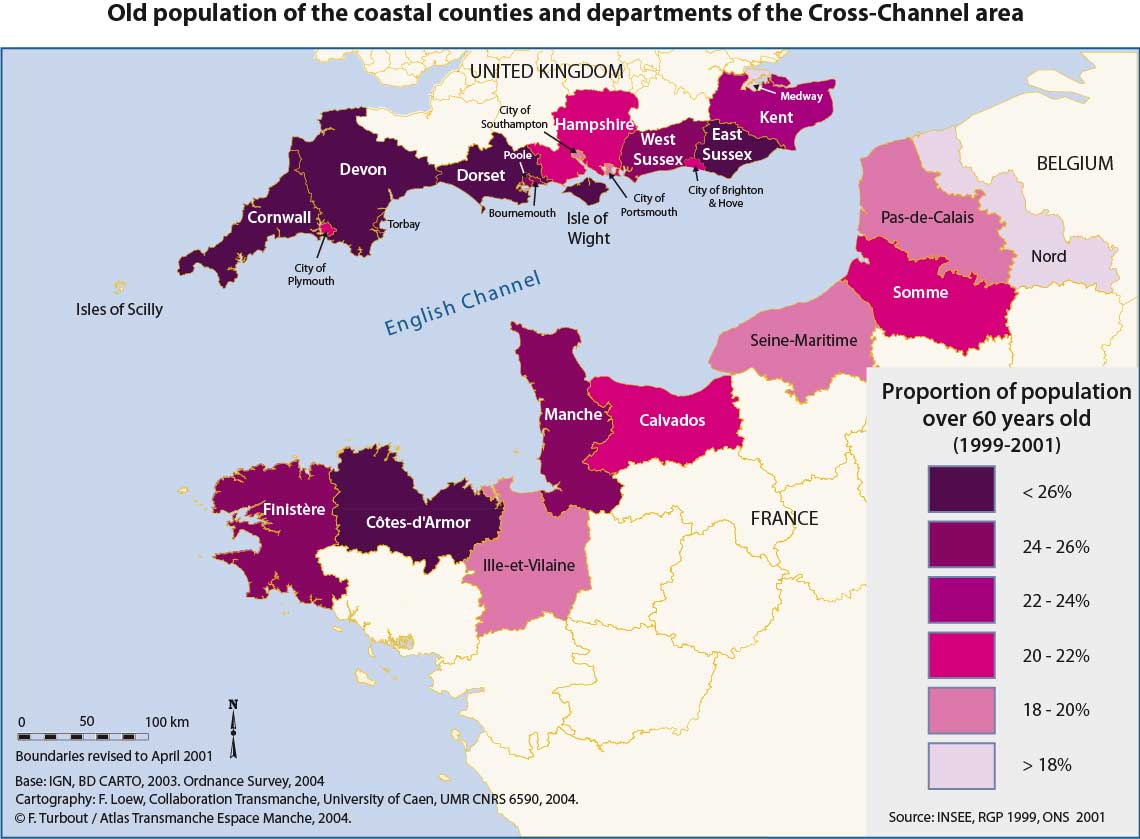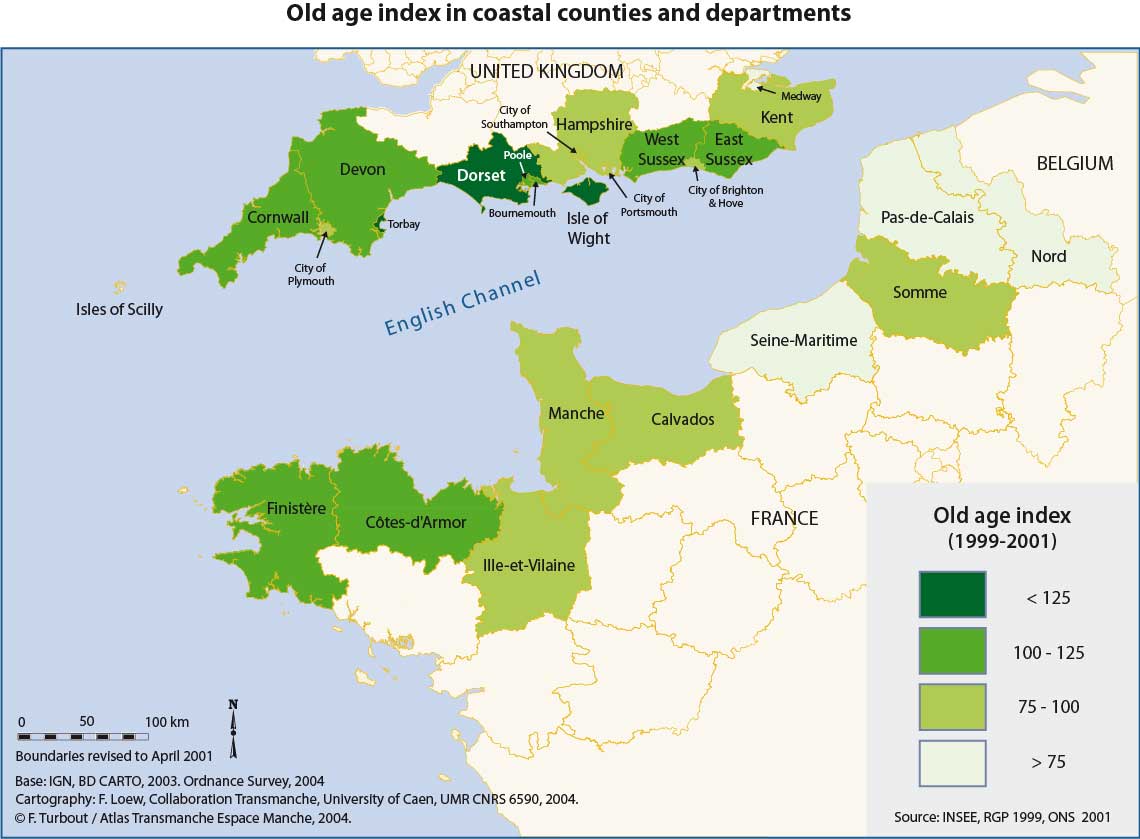

 1990
1990Distribution of population
Following the last French and British censuses, the population of the coastal counties and departments bordering the Channel now totals 22 773 324 inhabitants. This statistic does not include the two national metropolitan areas of London and Paris. In total, the population of the different coastal counties and departments represents nearly 46% of the 49 591 594 inhabitants of the whole Transmanche Zone. Nationally, the coastal counties in question represent 14.5% of the population of England, or 12.1% of that of the Kingdom, a total of 7 118 867 inhabitants distributed across 7 counties and 8 unitary authorities bordering the Channel. On the French side, the coastal departments group 15 654 457 inhabitants, that is 26.75% of France's population. In terms of overall distribution, the weight of population is greatest in the eastern part of this Channel area. In England, this geographical distribution is explained by the proximity of London, and in France by the higher urban population densities of the Nord–Pas-de-Calais.
Fertility and mortality
Fertility and mortality rates reflect the demographic vitality and natural population growth of a region. In the coastal counties and departments of the Channel area, two contrasting situations are found: a major north eastern French sector, corresponding to the so-called “fertile crescent” (zone of traditionally high birth rates and fertility, but now in decline) as opposed to an English southern and French western sector where the birth rate does not exceed 13 per thousand inhabitants. On the other hand, mortality rates are low in almost all the coastal French departments with the exception of the two Breton departments (Finistère and Côtes-d'Armor), and all the English coastal counties. Clearly, these rates do not reflect environmental factors but simply a much older-aged population leading to higher death rates.
Structure of the population
The overall demographic structure reveals two types of area: the French north-east sector is still relatively unaffected by an ageing of its demographic structure (as represented by the old age index) where the proportion of population under 20 is over 27.5% and that of the older population over 60 remains under 22% of the total. In contrast, both the English south and the two Breton departments show advanced signs of ageing of their respective populations. The old age index, measuring the relationship between the old and young elements of the population, exceeds 100, the threshold indicating a higher proportion of old over young. Only Hampshire and Kent provide the exception, whilst the other coastal counties of the English South, particularly Dorset and the Isle of Wight are already characterised by old-age profiles.
top













